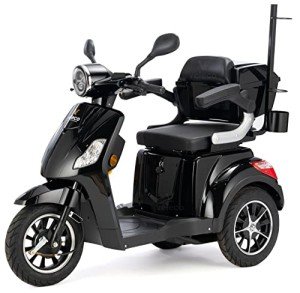Mobility Scooters: The Ugly Truth About Mobility Scooters
Mobility Scooters: A Comprehensive Guide
Mobility scooters have ended up being a necessary mode of transport for numerous people facing mobility difficulties. This post explores the different facets of mobility scooters, including their types, benefits, functions, and a guide for prospective buyers.
Comprehending Mobility Scooters
Mobility scooters are electrically powered devices created for individuals with limited mobility. They supply a method of transportation for individuals who may have trouble strolling however still desire to maintain their self-reliance. They are available in numerous styles and features to accommodate a large variety of needs.
Types of Mobility Scooters
Mobility scooters can usually be classified into 3 main types:
Type
Description
Best For
Compact Scooters
These are small and lightweight, perfect for inside and short trips.
Users with limited storage area or those who take a trip frequently.
Mid-size Scooters
A balance between portability and stability, ideal for both indoor and outdoor usage.
Those who require to cover a range of surfaces.
Sturdy Scooters
Big and robust, created for rugged outdoor use and heavier people.
Users requiring extra weight capacity or going off-road.
Secret Features of Mobility Scooters
The option of mobility scooter frequently depends on the features that line up with individual needs. Here are a few of the key functions to think about:
Weight Capacity: Mobility scooters come with different weight limits. It is essential to choose a scooter that can effectively support the user's weight.
Range: The distance a scooter can take a trip on a single charge varies. Depending upon user requirements, one might choose for scooters with a variety of up to 40 miles.
Speed: Most mobility scooters can reach speeds in between 4 to 8 miles per hour. Consider what speed is comfy and safe for the intended environment.
Turning Radius: A compact turning radius is vital for indoor usage, enabling simpler navigation in tight spaces.
Battery Type: The kind of batteries used can affect the scooter's efficiency. Lead- My Mobility Scooters and lithium-ion batteries are the most typical.
Advantages of Using Mobility Scooters
The advantages of mobility scooters extend beyond just transport. Some essential advantages include:
Independence: Users can navigate their environment without relying on caregivers, promoting self-reliance and self-esteem.
Health Benefits: Using a scooter can motivate outdoor activity, resulting in physical and mental health improvements by minimizing feelings of isolation.
Convenience: Scooters can quickly be run in numerous environments, whether inside, in mall, or outdoors.
Important Considerations When Buying a Mobility Scooter
When buying a mobility scooter, several considerations can help make sure that you select the best design:
Assess Individual Needs:
- Mobility level: Consider just how much help the person will require.
- Series of usage: Determine where the scooter will primarily be used (indoors, outdoors, on rough surfaces, and so on).
Test Drive:
- Always test drive a number of designs to find an ideal fit. Pay attention to convenience, ease of steering, and the scooter's responsiveness.
Evaluation Safety Features:
- Look for scooters with adequate security features like lights, signs, and anti-tip styles.
Examine Warranty and Service Options:
- A reliable guarantee and offered service options are essential for long-lasting use.
Frequently Asked Questions about Mobility Scooters
**1. How quick do mobility scooters go?Mobility scooters typically have speeds ranging from 4 to 8 mph, with many developed for security instead of high-speed travel. 2. Are there weight restrictions on mobility scooters?Yes, mobility
scooters include particular weight limits, typically ranging from
250 pounds to over 500 pounds, depending on the model. 3. Can mobility scooters be used indoors?Certain designs, especially compact scooters, are specifically created for
**indoor usage and are much easier to navigate in tight areas. 4. How typically do the batteries need to be replaced?Battery life can vary based upon use, however generally, with proper care, batteries may last in between 1 to 3 years before requiring replacement
**. 5. Are mobility scooters covered by insurance?Coverage can vary, but some insurance plans, including Medicare and Medicaid, may cover part of the expense. It's recommended to contact private insurance companies. Mobility scooters function as a
valuable tool for lots of individuals, enabling them to preserve
their freedom and independence. By comprehending the various types and features of mobility scooters, individuals can make educated decisions customized to their specific needs.
Whether utilized for errands, interacting socially, or leisurely activities, mobility scooters can improve the lifestyle for those with mobility restrictions. Buying a mobility scooter is a decision that can significantly impact a person's every day life. Therefore, people need to thoroughly examine their choices and pick a model that best aligns with their way of life and mobility requirements
.  ******
******